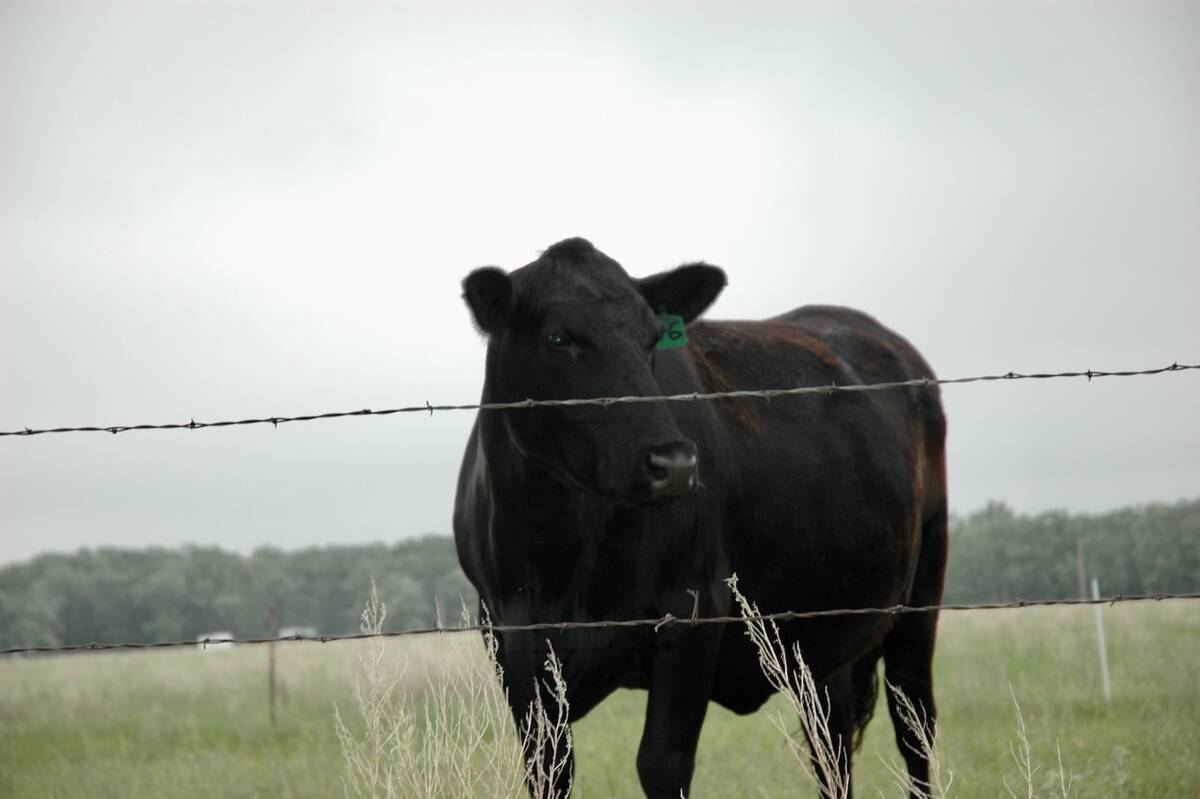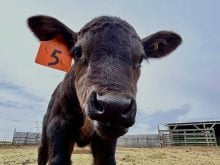Springtime brings risk for metabolic and nervous system problems brought on by acute magnesium deficiency. This condition has been called tetany, grass staggers, milk tetany, lactation tetany, winter tetany, wheat pasture poisoning, crested wheatgrass poisoning, barley poisoning, and perhaps others.
It mainly affects mature cattle grazing lush forage and is due to deficiency of magnesium in the bloodstream and the cerebrospinal fluid that surrounds the brain and spinal cord.
Calves are rarely affected. Mature animals are more susceptible because they are less able to quickly mobilize magnesium from their bones to meet the body’s needs, and also have a reduced ability to absorb this mineral.
Read Also

High prices make cow culling decisions easier
There’s some flexibility around good cows that aren’t pregnant, depending on the philosphy of the ranch, but poor-productivity cows should be culled, livestock nutritionist Peter Vitti says.
Low blood levels of magnesium can occur in all age groups and both sexes under certain conditions but is most common in lactating cows in the first 60 days of lactation.
Older, heavier-milking cows are most at risk, especially when grazing immature cool-season grasses and lush early growth. Grass tetany can also occur in late pregnancy if forages are low in magnesium, or when certain other nutrients such as potassium interfere with adequate absorption and utilization of magnesium in the body.
When cattle are first turned out on lush pasture in spring, for instance, the relatively high level of potassium and low level of magnesium in immature grasses may cause problems.
2022 conditions may be similar
The same effects can occur when cattle eat harvested forage that is too low in calcium and magnesium and/or high in potassium. Dr. John McKinnon, professor emeritus at the University of Saskatchewan, tells of an incident about 20 years ago in Western Canada in which several cattle were affected by this kind of imbalance and showed signs similar to grass tetany.

“In the summer of 2001 we had severe drought,” says McKinnon. “Many producers that year put up green feed for winter. That particular winter in northwestern Saskatchewan, there were numerous herds with down cows as they approached spring calving.
“In 2021 we also had severe drought in many parts of Western Canada, with a lot of green feed being used again. The same type of scenario that led to that earlier outbreak could also become a problem again in 2022 spring.”
Tetany issues can occur whenever the calcium or magnesium levels are too low.
McKinnon says there are two ratios that can be used when looking at feed.
“With grass tetany we often use what’s called the tetany ratio—the ratio between potassium in the diet and the calcium and magnesium,” he says.
This ratio is the amount of potassium, divided by the sum of the calcium and magnesium. It is calculated not as a percent, but in milliequivalants. It refers to 1950s research in New Zealand, which looked at this ratio in many animals and found that any time it got above 2.2, the animals were susceptible to developing grass tetany. If the ratio was below 2.2, the animals did not have a serious problem.
“Going back to western Canadian winter of 2001–02, when we looked at the feeds in our situation, the tetany ratio was actually about one,” says McKinnon. “Thus, the tetany ratio was not out of whack, but something else was.”
The second feed ratio McKinnon pays attention to is called the DCAB ratio, or dietary cation:anion balance. Commonly, sodium and potassium are used as the positive ions, and chloride and sulfate are the negative ions.
A lot of research has examined milk fever in dairy cows and the DCAB ratio.
“In dairy cattle it’s been clearly shown that as cows approach calving, the more negative this ratio, the less likely the cow is to have milk fever,” says McKinnon.
In pre-partum rations, as dairy cows approach calving, nutritionists often formulate the feed to have a negative ratio, which might be minus 50 to minus 150 Meq/Kg of dry matter.
“Any time it starts to get positive, we see increase in incidence of milk fever,” he says.
Limited research for beef cattle
There has been little similar research in beef cattle.
“What we found, when we looked at the DCAB ratio in these herds during the 2001- 02 outbreak, we were dealing with ratios of plus 300 to 500,” says McKinnon. “We feel that this positive DCAB ratio was leading to milk fever in these beef herds.
“The answer of why it was that high comes back to that particular year. There are several factors that can lead to high potassium levels in green feed. One is the use of nitrogen fertilizer or manure; the plants accumulate potassium. The other aspect is drought.”
The plants grow slower than normal and have more time to accumulate potassium.
“That year, we were dealing with severe drought. We think the high level of potassium that accumulated in the forages resulted in high potassium intake in the cattle,” he says. “This led to the high DCAB ratio that in turn led to the milk fever-type conditions. But it wasn’t a classic milk fever situation.”
A good message for beef producers and nutritionists is to have forages analyzed, especially when dealing with an unusual situation such as drought or when using feeds that are not normally fed.
“Feed testing is a crucial management tool and when it comes to minerals, potassium should be looked at in forages, particularly with green feed,” says McKinnon. “Any time we start dealing with forages that may approach potassium levels that are 2.5 per cent or higher, this should trigger alarm bells. People need to think about when they are feeding this, and to which cattle.”
Other classes of livestock might more safely use this feed rather than heavily pregnant or calving cows.
“This is certainly an issue in the last six to eight weeks prior to calving,” says McKinnon. “Potassium intake should be monitored at that time.”
He says the 2002 situation involved a unique spring when many factors combined to produce the problem. But every year, there are reports of isolated cases of milk fever situations that are similar to grass tetany.
The pre-calving ration is important from several perspectives, he says. Producers should be sure the energy, protein, mineral and vitamin levels are correct to ensure that cows have adequate nutrients for proper fetal growth, and that they maintain weight and condition going into calving.
“On lush, fast-growing spring pastures where the potassium-magnesium balance may be out of whack and cattle suffer from low magnesium levels, grass tetany is also a risk,” he says.















